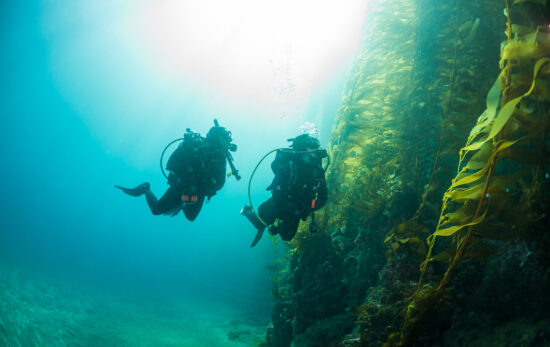With over 3,000 marine species, the Galapagos Marine Reserve (GMR) is a marine life melting pot. Three ocean currents meet in the Galapagos islands, bringing in biodiversity. So divers planning a bucket-list trip to the islands will see incredible marine life in the Galapagos.
The three colliding ocean currents bring together chilly mineral-rich waters, warm water, and cold deep water currents. This process brings about diversity and endemic animals (endemic means native or restricted to a particular place). So, some marine animals only live in the Galapagos. Thankfully, the GMR is one of the world’s largest marine protected areas (MPAs).
Below we share five interesting marine species you can see in the Galapagos and why they are protected. If you take an exciting trip to see this marine life in the Galapagos, be sure to follow our Ten Tips for Divers so you can contribute to a healthy ocean for these unique animals and more!
Marine Iguana
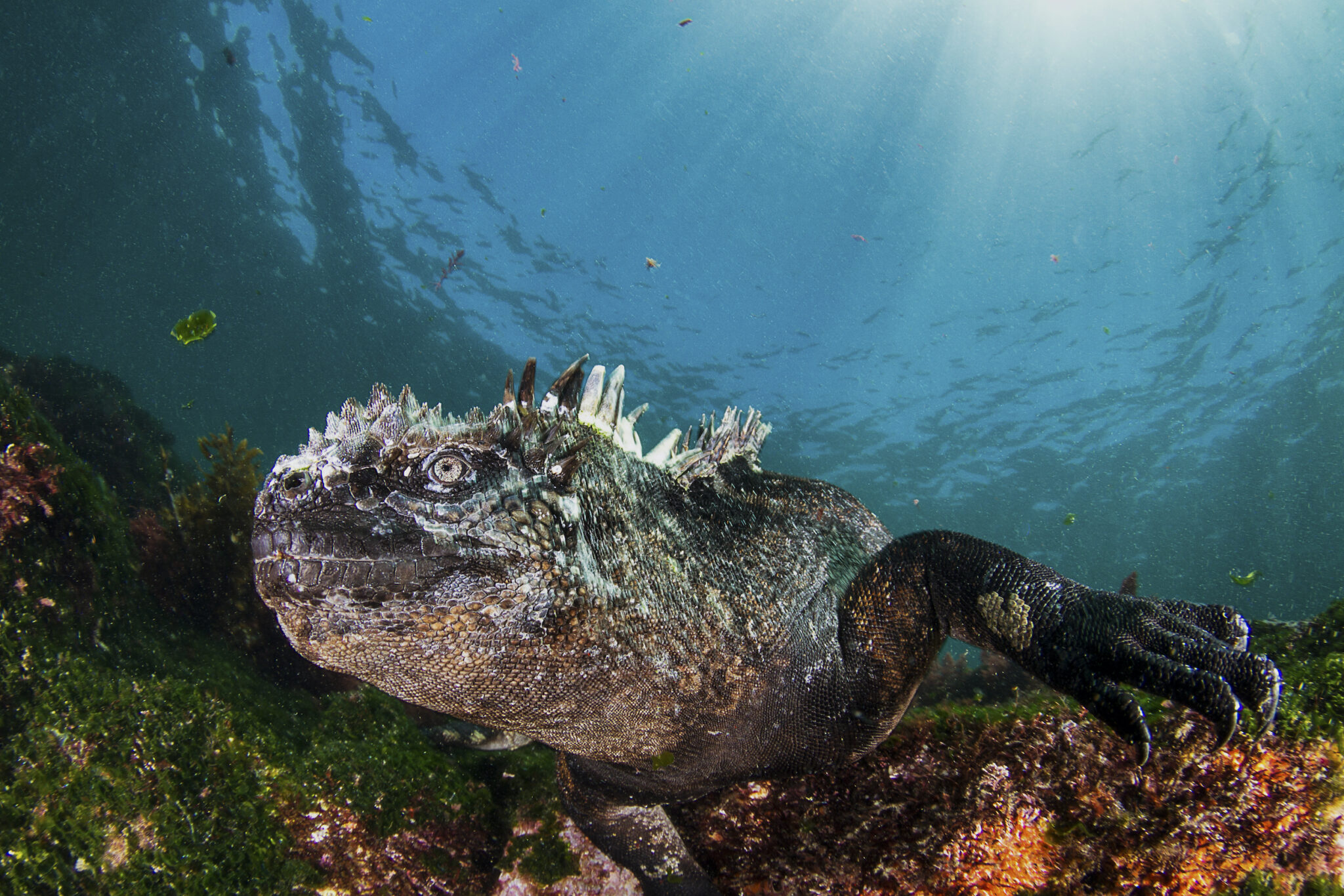
One of the most famous endemic species in the Galapagos is the world’s only marine iguana. Scientists believe land iguanas drifted across the ocean on logs from South America millions of years ago. When they didn’t find their food, the iguanas evolved to eat the red and green algae growing on the rocky Galapagos coasts. Now, Galapagos iguanas can dive underwater for up to ten minutes. As a result, special glands clean their blood of the salt they ingest while diving. Visitors can see the resulting ‘wigs’ of salt on their noses.
The population of marine iguanas is vulnerable to extinction. This is because non-native predators like rats, cats, and dogs, eat their eggs and young. As a result, marine iguanas are a protected species.
Scalloped Hammerhead Shark
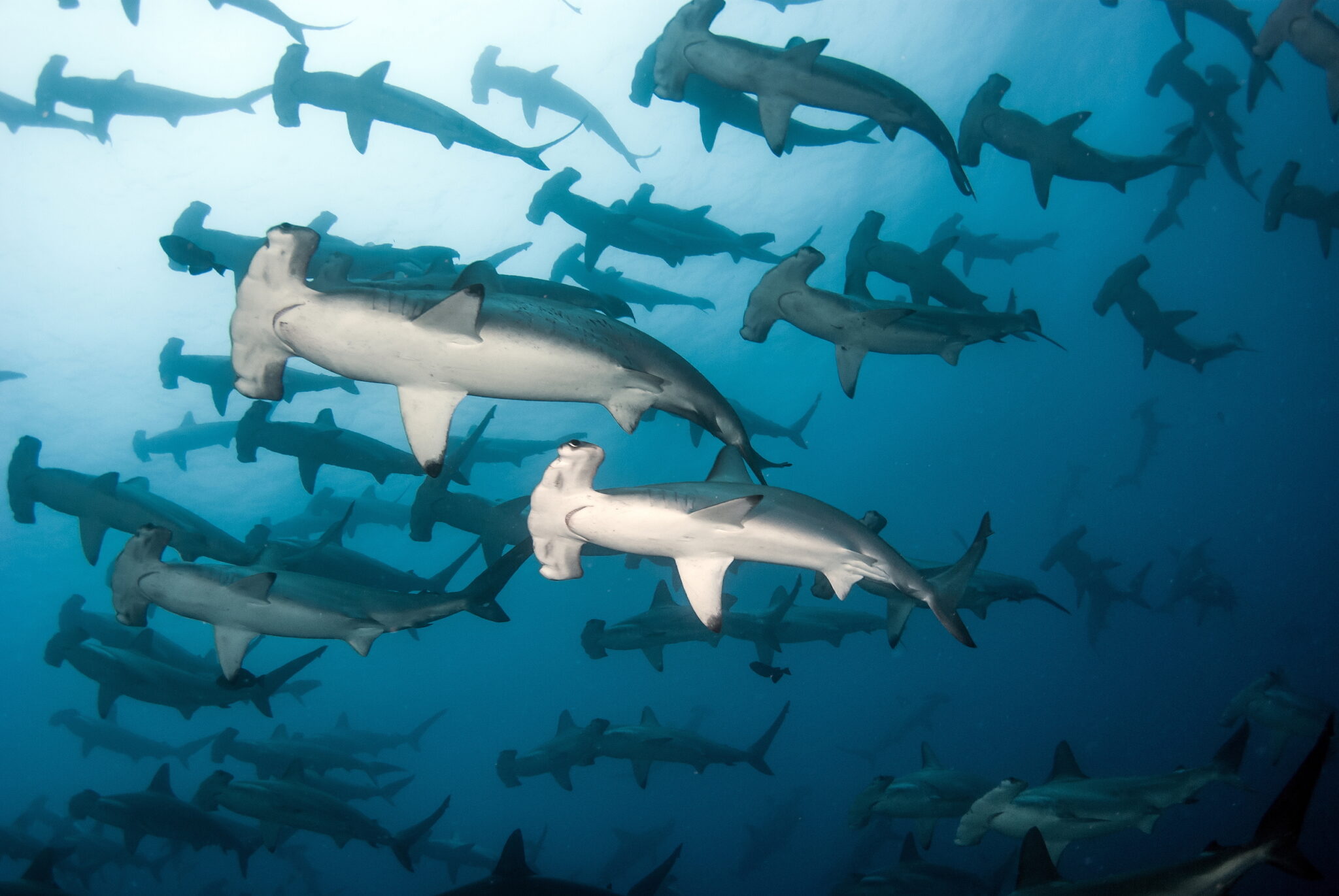
Scalloped hammerheads are the most common of all hammerhead sharks. They are a migratory species but swim in the waters off the coast of the Galapagos all year long. Excitingly, the GMR is one of the only places where divers see scalloped hammerhead sharks gathering in huge schools, sometimes up to several hundred individuals at a time. Why do they exhibit this behavior? Excitingly, that answer is still a mystery. You can see the schooling sharks at Shark Point.
Illegal and commercial fisheries target scalloped hammerheads and also accidentally catch them as bycatch. Therefore, they are listed as endangered. However, laws protect scalloped hammerhead sharks from being caught within the GMR.
Galapagos Penguin
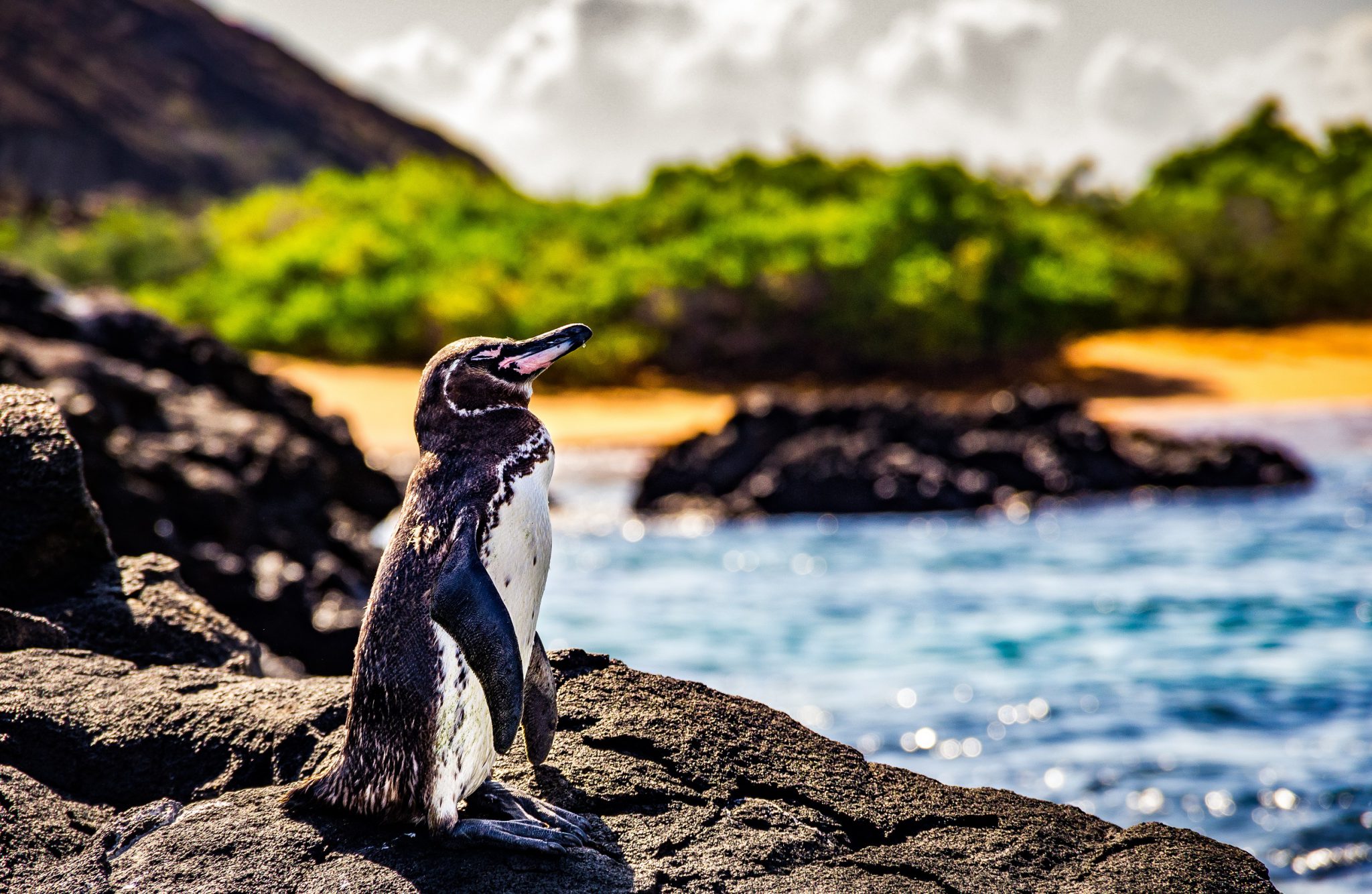
When you think of iguanas, hammerhead sharks, and coral reefs, the last thing you probably expect to see is penguins. However, expect to be surprised by marine life in the Galapagos archipelago! The islands are home to the only penguin species found north of the equator. The small species are endemic to the Galapagos. These agile marine birds can reach speeds of 35 km per hour (22 miles per hour) and they mate for life.
The current population of Galapagos penguins is estimated to be only 2,000 birds. Like the iguana, introduced animals like cats and rats eat penguins. So, the IUCN lists the species as Endangered. However, conservationists are making efforts to grow the population. In 2010, researchers built additional penguin nest sites to assist the population in rebounding.
Galapagos Fur Seals
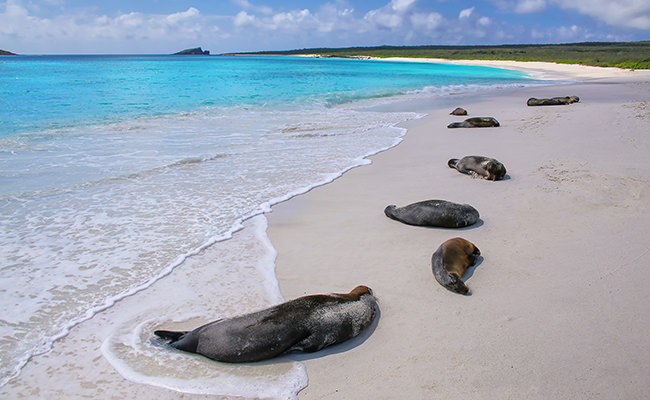
One marine mammal endemic to the Galapagos is the Galapagos Fur Seal. They stand out from their sea lion counterparts because of their thick fur coat. To hunt, fur seals dive at night to depths between 10 m (33 ft) and 50 m (164 ft). Although sometimes they greatly exceed that depth. Similar to the Galapagos penguin, the fur seals on the island are the smallest of the ear-sealed family.
El Niño weather patterns impact populations of Galapagos fur seals. Historically, the warm ocean waters caused by El Niño decrease the food available to the species. Currently, Ecuadorian law fully protects Galapagos fur seals.
Galapagos Shark
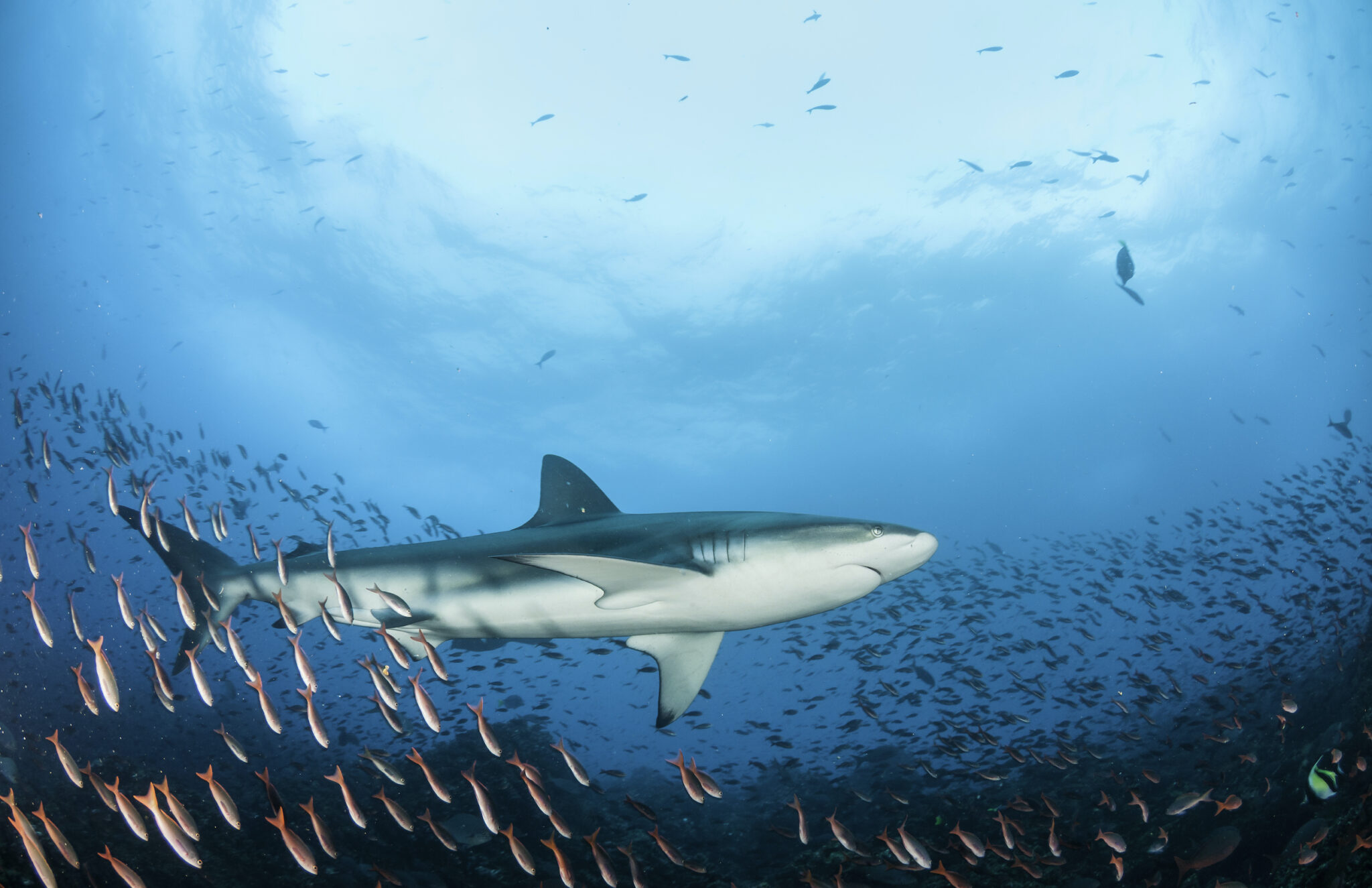
Despite their name, Galapagos sharks are not endemic – they live around the world. The species received their title because researchers first discovered them in the GMR. Galapagos sharks are one of 32 shark species in the Galapagos. Divers may find it challenging to identify these animals, as they look similar to reef sharks and dusky sharks. Interestingly, satellite studies have shown that individuals dive down to 680 meters (2,230 feet) and then rapidly ascend for an unknown reason.
The IUCN lists the Galapagos shark as Near Threatened. Their only known predators are fisheries that may catch individuals either purposefully or as bycatch. A slow reproductive rate leads to a slow recovery. However, shark fishing in the GMR is illegal.
A Diverse, Protected, Ecosystem
Sea lions, sharks, and penguins, oh my! The Galapagos Marine Reserve can provide visitors with unforgettable experiences, thanks to its diversity, and protective measures. Remember to pack reef-safe sunscreen, follow our Ten Tips for Divers, and learn about responsible tourism in the islands, before your trip to see marine life in the Galapagos!


